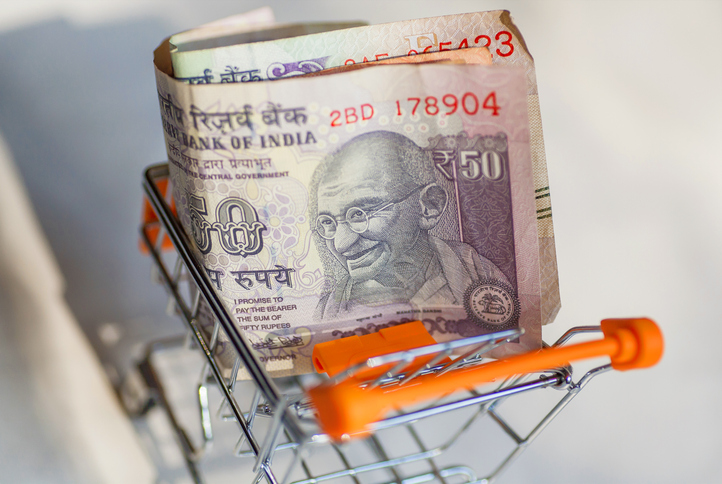It might be better for the Reserve Bank of India (RBI) to allow the rupee to depreciate a bit, letting it find its natural balance, said Soumya Kanti Ghosh in an SBI research report.
Rupee had been holding remarkably well with RBI intervention, however, the Indian markets have performed much better, SBI Group Chief Economic Advisor Soumya Kanti Ghosh said in the research report. Rupee has been holding remarkably well which is in sharp contrast to the 2013 taper tantrum crisis when the rupee was witnessing significant volatility for a prolonged stretch of time, the report said.
Advertisement
Quoting an example, the report said non-deliverable forward (NDF) market for three-month tenure showed that three-month forward rate for USD/INR pair was now over Rs82 per dollar. Interestingly, the NDF market had factored Rs80-barrier breach from August.
The report said the implied yield on INR in the NDF is currently in the 4.25% range. The yield was steadily rising from mid-August, implying depreciation pressure on the rupee, going forward, it added.
The report said a limited period of rupee depreciation might be a better way to wade through the current period of turbulence. Even as the dollar index has surged by 17.1 per cent since the war broke out, the rupee has only depreciated by 7.8%. Dollar index tracks the relative value of US dollar against a basket of important world currencies.
It added this indicated that the RBI had been leaning against the wind in terms of managing the currency and it might pay off now with a little bit of leaning with the wind, though only to an extent.
Report said the relentless pounding of global financial markets in recent weeks had bought into sharp focus the dilemma that central banks were facing across economies in terms of stabilising the currency and the bond rates against the rate cycle of US Federal Reserve, currently, was likely to go beyond the earlier estimates.
Globally the rout in bonds markets, the report said, has been exacerbated by a long road to contain runaway inflation, as central banks continue with rate hikes spree. However, Indian bond yields have been remarkably contained with even the latest state development loan (SDL) auctions of Rs 27,000 crore going off smoothly.
Report said that investors were looking at elevated rates through 2023, dampening their appetite across asset classes. It added one of the possible reasons for the sharp increase in US bond yields, having a material impact on emerging markets, could be the selloff in US securities.
Till now countries were protecting their currencies with the depletion of foreign exchange (FX) reserves. It said FX reserves of China and Singapore declined by more than $100 billion in merely six months and in the case of India, FX reserves had declined by $86 billion to $546 billion.
In equity markets, while the foreign equity markets year-to-date (YTD) decline in 2022 is in 20-30% range, in the case of India the decline is merely 3.5%, the report said. It said not only Indian markets are lowest loss generators they are stable, too.
Report said Indian equities in 2022 showed resilience relative to most advanced and emerging market economies (EME) peers and India’s performance had also been remarkable on market capitalisation front. It said the market cap in dollar terms in case of India had increased maximum compared to other major economies (1.37 times in 2022).
The SBI report said retail participation continued to increase. Retail investors turned net buyers of Indian equities in 2020 after an 11-year hiatus, and the subsequent 18 months. It said the retail investors, since 2020, have invested a total of Rs 2.9 trillion on a net basis in NSE’s capital market segment of which Rs 2.3 trillion had been invested over 2021 and in the first half of this year. Finally, credit growth in India continues to be buoyant indicating growth has still been robust.











